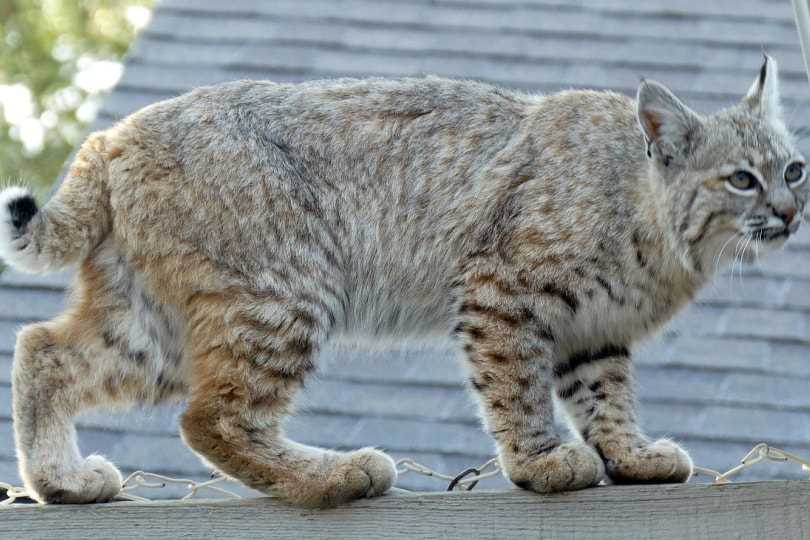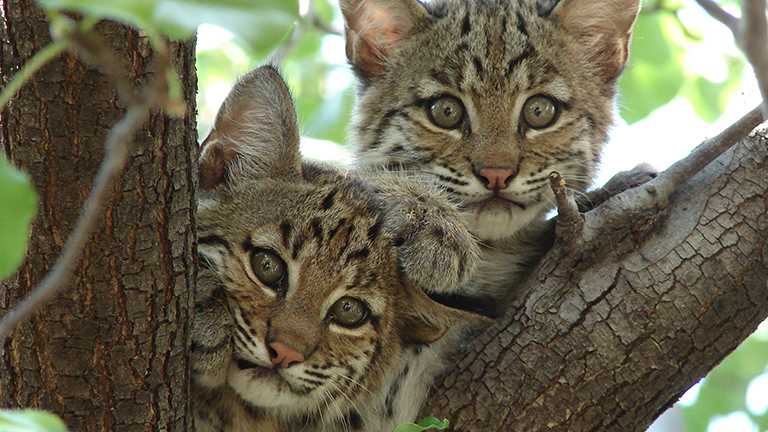Contents
Everything You Should Know About the Minnesota Bobcat Hunting Season: Tips, Regulations, and More

If you’re a predator hunter or have an interest in wildlife management, the MN bobcat season is an event you don’t want to miss. Bobcats are fascinating creatures, and hunting them requires skill, knowledge, and an understanding of the regulations set forth by the Minnesota Department of Natural Resources.
Bobcat hunting season in Minnesota is an exciting time for outdoor enthusiasts. The state has established a quota for the number of bobcats that can be harvested, ensuring the population remains stable and healthy. This quota system is essential in maintaining a balanced ecosystem and preserving the overall well-being of the bobcat population.
When it comes to hunting bobcats in MN, there are specific regulations that must be followed. These regulations outline the acceptable hunting methods, licensing requirements, and harvest reporting guidelines. It’s crucial for hunters to familiarize themselves with these regulations to ensure a legal and ethical hunting experience.
One popular method of hunting bobcats in Minnesota is trapping. Trapping bobcats can be a challenging and rewarding pursuit, requiring patience, skill, and knowledge of the animal’s habits and habitat. However, it’s essential to note that trapping bobcats requires a specific trapping license, in addition to a general hunting license.
Before heading out on your bobcat hunting adventure in MN, it’s crucial to apply for the required licenses and permits. The Minnesota Department of Natural Resources provides detailed information on how to obtain the necessary licenses, as well as the specific dates and times when bobcat hunting is allowed. Planning ahead and ensuring you have the proper documentation will make your hunting experience more enjoyable and hassle-free.
In conclusion, the MN bobcat season offers a unique opportunity for hunters and wildlife enthusiasts alike. Understanding the regulations, quotas, and licensing requirements is crucial for a successful and legal hunting experience. Whether you choose to pursue bobcats through trapping or other hunting methods, always remember to respect the animals and contribute to the conservation efforts in place.
Season Dates and Regulations

The bobcat hunting season in Minnesota, commonly referred to as the mn bobcat season, takes place during a specific time frame each year. The season dates for hunting bobcats vary annually and are determined by the Minnesota Department of Natural Resources (DNR). It is important for hunters and trappers to stay updated on the current season dates to ensure compliance with regulations.
Regulations for the mn bobcat season include specific licensing requirements and quotas. Before participating in the hunt, hunters must obtain a valid bobcat hunting license from the DNR. This license allows individuals to legally harvest bobcats during the designated hunting season.
In addition to licensing, there are strict quotas in place to manage the bobcat population and ensure sustainable hunting practices. The quota system limits the number of bobcats that can be harvested each season. Once the quota is met, the season may be closed earlier than anticipated. This measure helps maintain the population of this predator species and prevent overexploitation.
It is worth noting that besides hunting, bobcats can also be trapped during the trapping season. Trapping regulations may differ from hunting regulations, and trappers should familiarize themselves with the specific rules and guidelines set by the DNR.
Complying with the season dates and regulations is essential for the sustainable management of the bobcat population in Minnesota. By adhering to these guidelines, hunters and trappers can contribute to the long-term viability of this predator species while enjoying a rewarding outdoor experience.
Bobcat Hunting Season: November 1 – December 31

Bobcat hunting season in Minnesota (mn) runs from November 1 to December 31 each year. During this time, hunters and trappers have the opportunity to pursue this elusive predator in designated areas.
Hunting and trapping bobcats can be a thrilling experience for outdoor enthusiasts. It requires patience, skill, and knowledge of bobcat behavior and habits. Hunters must follow specific regulations and obtain the necessary licenses and permits to participate in the season.
In Minnesota, the bobcat hunting and trapping regulations are designed to manage the population and maintain a sustainable harvest. The Minnesota Department of Natural Resources (DNR) sets a quota for the number of bobcats that can be harvested each season to ensure the population remains healthy and stable.
Hunters and trappers should familiarize themselves with the regulations and quotas before participating in the bobcat season. It is important to understand restrictions on bag limits, permitted hunting methods, and designated hunting areas.
During the hunting season, hunters must also wear blaze orange to increase visibility and practice safe firearm handling. It is crucial to prioritize safety during bobcat hunting to prevent accidents and promote responsible hunting practices.
Before heading out into the field, it is recommended to scout potential hunting areas, study bobcat tracks and signs, and learn about their habits. Understanding the habitat and behavior of bobcats can greatly improve hunting success.
In conclusion, the bobcat hunting season in Minnesota is a thrilling opportunity for hunters and trappers to pursue this elusive predator. By following the regulations, obtaining the necessary licenses and permits, and practicing safe hunting techniques, hunters can have a successful and rewarding bobcat season.
Bag Limit: 1 bobcat per season

In Minnesota (MN), the bag limit for bobcats during the hunting season is set at 1 per hunter. This regulation is in place to ensure the sustainable management of the bobcat population and maintain ecological balance.
Before hunting bobcats, it is important to obtain the necessary licenses and permits required by the Minnesota Department of Natural Resources (DNR). These licenses can be obtained online or through authorized vendors. Hunters must also familiarize themselves with all applicable hunting and trapping regulations set by the DNR.
The bobcat hunting season in Minnesota typically begins in early December and lasts through the end of January. During this period, hunters with the required licenses are allowed to pursue bobcats within designated hunting zones. It is important to note that the hunting season may close earlier if the prescribed quota for bobcats is reached.
Minnesota classified bobcats as a predator and allows both hunting and trapping methods to harvest them. The quota for bobcats is determined by the DNR based on scientific studies and population assessments. The quota helps in managing the population and ensures the long-term viability of the species.
| Regulations | Details |
|---|---|
| Hunting Season | Early December – end of January |
| Bag Limit | 1 bobcat per season |
| License | Required from the Minnesota DNR |
| Methods | Hunting and trapping |
Bobcat hunting can be challenging but rewarding for those who are prepared and knowledgeable about the regulations and hunting techniques. It is essential to follow all appropriate hunting etiquettes and safety guidelines to ensure a successful and responsible hunting experience.
Remember, bagging a bobcat is not only about the trophy but also about the conservation efforts in managing the wildlife populations. Respect the quota and regulations set by the MN DNR to contribute to the sustainable management of bobcat populations in Minnesota.
License Requirements:
Before participating in the mn bobcat season, hunters and trappers must comply with specific license requirements and regulations. These requirements are in place to ensure the sustainable management of the bobcat population and promote ethical hunting practices.
Hunting bobcats in Minnesota requires a valid Bobcat Hunting license. This license can be obtained through the Minnesota Department of Natural Resources (DNR) website or any licensed DNR agent. It is important to check the MN DNR website or contact local DNR offices for the most up-to-date information on license availability and costs.
In addition to the Bobcat Hunting license, individuals interested in trapping bobcats must also obtain a Bobcat Trapping license. Trapping is a popular method for capturing bobcats, especially during the winter months when their fur is at its prime. The Bobcat Trapping license allows individuals to set traps and harvest bobcats in compliance with state regulations.
There are specific regulations in place for bobcat hunting and trapping to protect the population and ensure the ethical treatment of animals. For instance, hunters and trappers must adhere to set quotas, which determine the number of bobcats that can be harvested each season. These quotas are based on scientific assessments of the bobcat population and are subject to change each year.
License holders should familiarize themselves with the specific regulations and restrictions outlined by the MN DNR. This information includes the designated hunting and trapping seasons, the use of firearms or other legal methods, and any special requirements or permissions for hunting on certain types of land.
It is essential to abide by all license requirements and regulations while hunting or trapping bobcats in Minnesota. Failure to do so can result in fines, license revocation, or other penalties. Responsible and lawful hunting ensures the long-term sustainability of the bobcat population, and it is every hunter’s and trapper’s duty to contribute to the preservation of this predator species in Minnesota.
| License Type | Requirement |
|---|---|
| Bobcat Hunting License | Obtain from MN DNR website or licensed DNR agent |
| Bobcat Trapping License | Obtain from MN DNR website or licensed DNR agent |
Hunters must possess a valid Minnesota hunting license.

In order to participate in the bobcat hunting season in Minnesota, hunters must possess a valid Minnesota hunting license. This license is required for anyone who wishes to hunt bobcats or any other game species in the state.
Obtaining a hunting license in Minnesota is a straightforward process. Hunters can apply for their license online through the Minnesota Department of Natural Resources website or in person at an approved licensing agent. It is important to note that hunters must be at least 12 years old to apply for a license.
The hunting regulations for bobcats in Minnesota include specific guidelines and requirements that hunters must follow. These regulations help ensure the sustainability of the bobcat population and maintain a healthy balance within the ecosystem. Hunters should familiarize themselves with these regulations before heading out into the field.
One important regulation is the quota system in place for bobcat hunting in Minnesota. The state sets a specific quota each year, which limits the number of bobcats that can be harvested. This helps prevent overhunting and ensures the population remains stable. Once the quota has been reached, the season may close early, so it is important for hunters to stay informed and follow any updates from the Minnesota Department of Natural Resources.
In addition to hunting, trapping is also allowed as a method for capturing bobcats in Minnesota. Trapping regulations may differ from hunting regulations, so it is essential for hunters to understand the specific rules and requirements for trapping bobcats. This includes obtaining the necessary trapping permits and following the designated trapping seasons and methods.
Bobcats are primarily hunted as a game species, but they also play an important role as predators in the ecosystem. Managing the bobcat population through regulated hunting and trapping helps maintain a healthy balance in the Minnesota wildlife community.
Overall, hunters interested in pursuing bobcats in Minnesota must possess a valid hunting license and adhere to the state’s regulations and quotas. By doing so, they can enjoy a challenging and rewarding hunting experience while also contributing to the management and conservation efforts of these majestic predators.

A skilled hunter, dedicated conservationist, and advocate for ethical practices. Respected in the hunting community, he balances human activity with environmental preservation.
